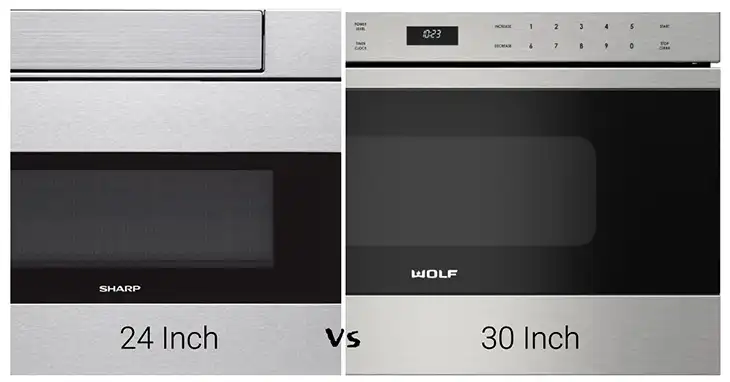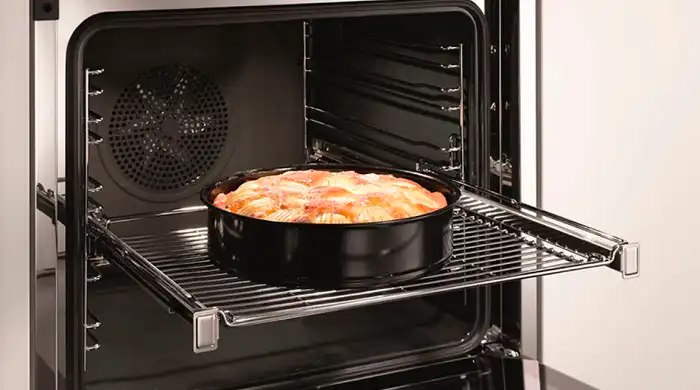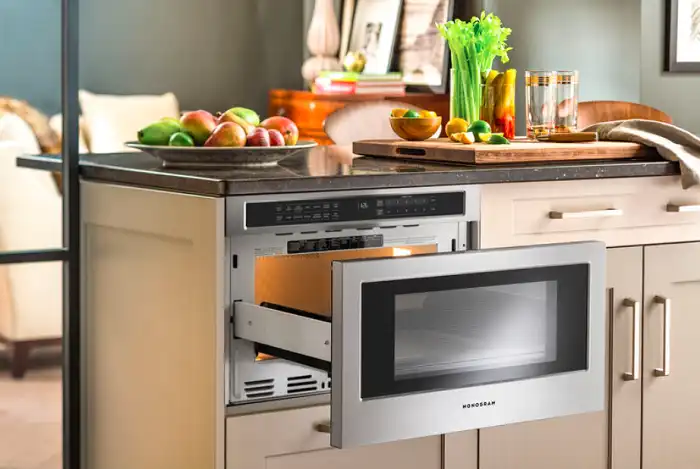24 vs 30 Inch Microwave Drawer [Answerd]
Microwave drawers are a unique and increasingly popular appliance option for modern kitchens. Unlike traditional over-the-range or countertop microwaves, these models are built directly into your cabinetry, offering a sleek and space-saving design. Microwave drawers provide several key benefits, including easier access, improved ergonomics, and a seamless integrated look.
When it comes to choosing a microwave drawer, one of the primary considerations is the size – specifically, whether to go with a 24-inch or 30-inch model. Both sizes offer their own unique advantages, so it’s important to carefully evaluate your kitchen’s layout, your cooking needs, and your design preferences to select the right fit.

Understanding the Size Difference
The primary difference between 24-inch and 30-inch microwave drawers lies in the external dimensions, not the internal cooking capacity. Both sizes generally provide similar internal volume and functionality, but the 30-inch model will have a slightly larger footprint to accommodate.
A key factor to consider with the size difference is the use of trim kits. These are decorative panels that are installed around the microwave drawer to create a seamless, built-in aesthetic within your cabinetry. Trim kits are available for both 24-inch and 30-inch models, allowing you to achieve a custom, integrated look regardless of the size you choose.
How to Determine Microwave Drawer Size According to Space
One of the most important factors in selecting between a 24-inch or 30-inch microwave drawer is the available cabinet space in your kitchen. The 30-inch model requires a larger cabinet opening to accommodate its wider dimensions, typically around 30 inches wide by 15 inches deep.

In contrast, the 24-inch drawer will fit into a smaller cabinet space, usually around 24 inches wide by 15 inches deep. This makes the 24-inch model a better fit for kitchens with more limited cabinetry or tighter spaces.
When measuring your cabinet space, be sure to account for any surrounding trim, doors, or other obstructions that could impact the installation. It’s also a good idea to consult with a professional appliance installer to ensure proper fit and alignment.
What are the Capacity and Functional Differences between Different Microwave Drawer

Despite the size difference, 24-inch and 30-inch microwave drawers generally offer very similar internal capacities and cooking capabilities. Both sizes typically provide around 1.2 to 1.5 cubic feet of usable cooking space, allowing you to heat, defrost, and cook a wide variety of dishes.
The primary functional differences between the two sizes tend to be quite minor. Some 30-inch models may include slightly more advanced features or slightly higher wattage, but these variations are not always consistent across all manufacturers and models.
Aesthetic and Kitchen Design Impact of 24 & 30 Inch Microwave Drawer

The size of your microwave drawer can have a notable impact on the overall aesthetic and design of your kitchen. A 30-inch drawer can create a more balanced, cohesive look, especially when paired with other large appliances like a 30-inch oven or range.
Conversely, a 24-inch drawer may be a better fit for smaller kitchens or those with more limited cabinetry space. The slightly smaller footprint can help maintain a spacious, open feel while still providing the convenience of a built-in microwave drawer.
Ultimately, the size you choose should complement the existing design and layout of your kitchen. Consider factors like adjacent appliances, cabinet configurations, and your personal style preferences to determine the best fit.
24 vs 30 Inch Oven Drawer: Ergonomics and User Accessibility
One of the key benefits of a microwave drawer, regardless of size, is the improved ergonomics and user accessibility. The drawer-style design allows for easier loading and unloading, reducing the need to reach up or crouch down.
Both 24-inch and 30-inch models typically have a similar drawer height, typically between 12-15 inches from the floor. This height range is generally considered optimal for comfortable access and usage by most users.
However, if you have specific ergonomic needs or concerns, such as limited mobility or wheelchair access, you may want to carefully consider the drawer height and ensure it aligns with your personal requirements.
Cost and Value Comparison of 24 & 30 Inch Oven Drawer
When it comes to pricing, you can generally expect a slight premium for the 30-inch microwave drawer models compared to their 24-inch counterparts. This difference is typically in the range of $100-$300, depending on the specific features and brand.
That said, it’s important to focus on the overall value and functionality rather than just the initial cost. Both 24-inch and 30-inch microwave drawers offer a high-end, integrated appliance experience that can significantly enhance your kitchen’s efficiency and aesthetic appeal.
Ultimately, the size you choose should be based on your specific needs, space constraints, and design preferences – not solely on a minor price difference. Investing in the right size for your kitchen will provide long-term value and enjoyment.
Installation Considerations for Different Microwave Drawers
The installation process for 24-inch and 30-inch microwave drawers is generally quite similar, as both models require careful cabinet preparation, electrical wiring, and precise placement. However, it’s always recommended to have a professional appliance installer handle the process to ensure proper fit, function, and safety.
During the installation, the installer will need to carefully measure and cut the cabinet opening to accommodate the selected drawer size. They’ll also need to ensure proper ventilation, electrical connections, and any necessary trim kits or finishing touches.
While both 24-inch and 30-inch models have comparable installation requirements, consulting a professional is highly advised to avoid any potential issues or complications down the line.
Who Should Choose a 24-Inch Drawer?
The 24-inch microwave drawer is an excellent choice for homeowners with more compact kitchen layouts or limited cabinetry space. Its smaller footprint makes it a better fit for tight corners, galley-style kitchens, or homes with smaller overall square footage.
The 24-inch size is also a great option for single-occupant households or those with modest cooking needs. The internal capacity is still ample for reheating, defrosting, and preparing simple meals, but the smaller exterior dimensions can help maintain an open, uncluttered feel in the kitchen.
Who Should Choose a 30-Inch Drawer?
The 30-inch microwave drawer is an ideal choice for homeowners with larger, more spacious kitchens. Its wider dimensions can help create a balanced, cohesive look when paired with other full-sized, 30-inch appliances like ovens or cooktops.
The additional width of the 30-inch model can also be beneficial for those who entertain frequently or have a household with multiple cooks. The extra interior space provides more flexibility for accommodating larger dishes, platters, and containers.
Additionally, the 30-inch drawer may be a better aesthetic fit for modern, luxurious kitchen designs where a larger, more prominent appliance plays a central role in the overall visual impact.
FAQ
Can I install a 24-inch microwave drawer in a 30-inch cabinet opening?
Yes, it is possible to install a 24-inch microwave drawer in a 30-inch cabinet opening. However, you’ll need to use a trim kit to fill the extra space and create a seamless, integrated look. Consult with a professional installer to ensure a proper fit and appearance.
Do 24-inch and 30-inch microwave drawers have the same cooking power?
In most cases, yes. While there may be slight wattage differences between models, the cooking power and overall functionality are typically comparable between 24-inch and 30-inch microwave drawers. The size difference primarily impacts the exterior dimensions, not the internal capacity or performance.
Can I convert a standard over-the-range microwave to a built-in drawer?
No, it is not possible to convert a standard over-the-range microwave into a built-in drawer model. Microwave drawers are designed as a completely separate appliance category with unique installation requirements and internal components. Attempting to modify a traditional microwave would not be feasible or recommended.
How do I measure my cabinet space for a microwave drawer?
To measure your cabinet space for a microwave drawer, start by measuring the width, depth, and height of the available opening. Be sure to account for any surrounding trim, doors, or other obstacles that could impact the installation. It’s also a good idea to leave a small amount of clearance on all sides for proper ventilation and fit.




